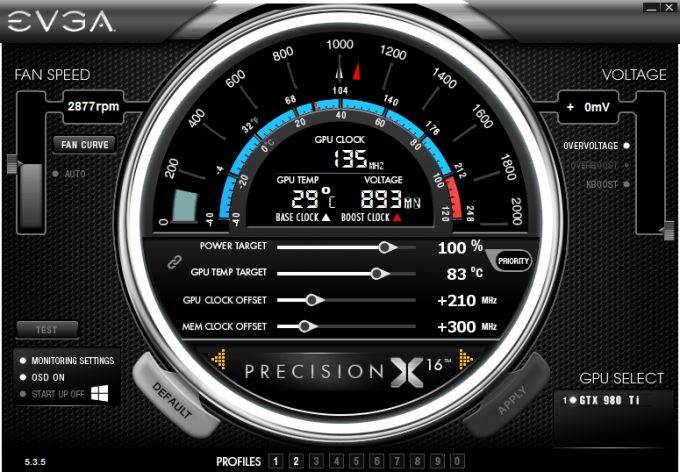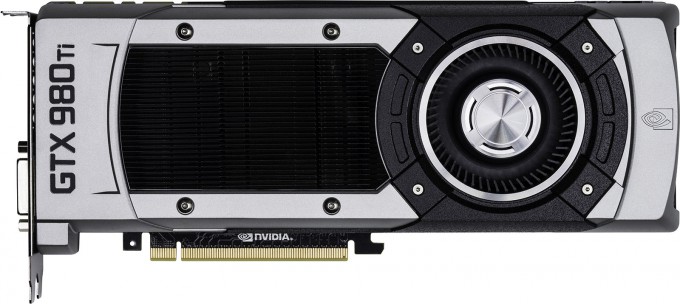- Qualcomm Launches Snapdragon 4 Gen 2 Mobile Platform
- AMD Launches Ryzen PRO 7000 Series Mobile & Desktop Platform
- Intel Launches Sleek Single-Slot Arc Pro A60 Workstation Graphics Card
- NVIDIA Announces Latest Ada Lovelace Additions: GeForce RTX 4060 Ti & RTX 4060
- Maxon Redshift With AMD Radeon GPU Rendering Support Now Available
NVIDIA GeForce GTX 980 Ti Overclocking & Best Playable Settings
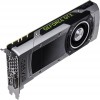
We discovered last week that NVIDIA’s latest high-end graphics card, the GeForce GTX 980 Ti, is damned fast. It performs close to the TITAN X, yet costs hundreds less. But does that mean we should consider its overall performance ideal, and just leave it alone? Nah – let’s get to overclocking this thing.
We established last week that NVIDIA’s GeForce GTX 980 Ti is a great high-end card. The GTX 980 itself was what I considered to be “amazing”, when it was released back in September, and the Ti makes it even better by adding more cores to the mix. The GTX 980 Ti carries a $150 premium over the non-Ti, but it’s fortunately warranted. At least, as of the time of writing. Once AMD’s new series drops, which is expected to happen on the 16th, we could see a shake-up. At least, I hope we will.
We know that the GTX 980 Ti is a “mini TITAN X“, in that it’s very fast for its $649 price tag, but it’d be no fun to leave things alone. No, it’s fun to push buttons, and see what kind of true performance we can eke from the card through overclocking. So, as I did with TITAN X, I spent a fair amount of time overclocking the 980 Ti. At the same time, I knocked the card back down to stock and conjured up some Best Playable results across nine titles.
So without further ado, let’s do this!
Our GTX 980 Ti Overclock
Not long after undertaking the task of overclocking the GTX 980 Ti, I realized that this card is more difficult to push than the TITAN X. With an ultimate boost of 210MHz to the core, though, that’s a bit odd to say, but I just felt like I was reaching hard ceilings very easily – ceilings, where if you merely dropped 5 or 10MHz, you’d be 100% stable.
What’s interesting, though, is that I hit the same core overclock as I did with TITAN X – +210MHz. Even more interesting, perhaps, is that on TITAN X, that required a slight voltage boost, but it didn’t on the GTX 980 Ti. Where I failed to match the TITAN X is on the memory. At +300MHz, I fell short of the TITAN X’s +400MHz, but ultimately, that won’t matter nearly as much as the core overclock.
At first, I thought that +400MHz was stable, until a few specific tests told me it wasn’t. I came to believe that +350MHz was stable, then, as those specific tests passed without issue. Then I loaded up AC IV: Black Flag and quickly found myself looking at memory corruption on the screen. This card sure is sensitive. In the end, I dropped the memory down another 50MHz to settle on +300MHz, and that remained stable in every possible test I threw at it.
The core overclock had a similar evolution. It seemed to me at first that +230MHz was stable, but it wasn’t, and likewise, the same happened at +220MHz. But at +210MHz, the card behaved like a champ – and all without a voltage boost.
Because overclocking inevitably means “more heat”, as I did with the TITAN X, I manually set the fan speed on the 980 Ti to 60%. At this level, the card’s fan is noticeable, but it’s at a point where any reasonable game sound is going to more than drown it out. Even 70% is what I’d consider to be acceptable. It’s at the 80% mark where your cat’s ears might perk up.
I should be clear, though, that while I increased the fan speed, you might not have to. Even I didn’t have to, as putting it to 60% kept the temps well under 80°C. I just increased it for the sake of keeping things as cool as possible. Your chassis and ambient room temp will ultimately decide whether you need to force a higher fan speed or not. To test for yourself, you could run AIDA64 or GPU-Z’s logging feature to see where your card’s temperature is peaking, and whether or not that’s adversely affecting the clocks when that temperature is reached.
Putting The Overclock To Work
When it comes to overclocking, I don’t produce results unless I consider the overclock to be 100% stable. For that to be the case, it has to pass a long stress test (in this case, 100 minutes of 3DMark Fire Strike 4K), and also prove flawless through all regular benchmarking. That proved to be the case here.
To provide what I feel is the most accurate apples-to-apples representation of reference vs. overclocked performance, I forced the fan speed to 60% for both configurations. Even if a card like the GTX 980 Ti is running at stock speeds, its GPU Boost clocks can throttle a little bit if heat becomes an issue. That means that one GTX 980 Ti might appear to run a little bit faster (or slower) than someone else’s, because their PC and ambient room temperatures are different.
That means a couple of things: We can assume that the GTX 980 Ti’s “stock” results below represent its best possible performance; it also means that if I did leave the fan to its normal auto speeds, the results below would work even more in the overclock’s favor, given that configuration’s fan speed boost.
Enough of that; let’s get on with the performance results, shall we?
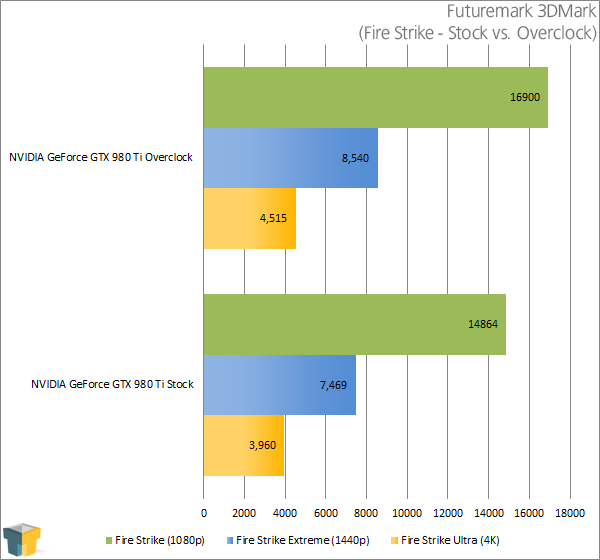
So far, so good. At all three resolutions, the overclock gave me a 14% boost. That’s a bit shy of the 16% increase I saw with the 4K test with TITAN X, but it’s hard to complain: 14% for free is fantastic. Let’s see if that kind of boost carries through to real games:
| Stock | Overclock | Gain (Avg) | |||
| 4K (3840×2160) | Min | Avg | Min | Avg | + / – |
| Assassin’s Creed IV | 27 | 35 | 34 | 40 | +14% |
| Battlefield 4 | 33 | 43 | 34 | 48 | +12% |
| Crysis 3 | 37 | 50 | 40 | 55 | +10% |
| Dying Light | 33 | 44 | 41 | 52 | +18% |
| Grand Theft Auto V | 29 | 36 | 34 | 43 | +19% |
| GRID 2 | 62 | 72 | 70 | 80 | +11% |
| Metro Last Light | 28 | 41 | 34 | 49 | +20% |
| Sleeping Dogs | 43 | 53 | 47 | 58 | +9% |
| Splinter Cell: Blacklist | 47 | 57 | 52 | 63 | +11% |
| The Crew | 43 | 53 | 52 | 59 | +11% |
I should note that the settings used for each of these games didn’t necessarily match the ones I use in our normal testing. In the case of AC IV: Black Flag, I cranked up the ambient occlusion in order to push the card harder, since Ubisoft deems it appropriate to cap its games at 60 FPS. Nonetheless, for the sake of improved accuracy, each test was run twice over, with the results averaged.
While 3DMark told us that our overclock improved performance by a definitive 14%, our real-world benchmarking showed us that gains can actually be seen anywhere from 9% to an impressive 20%. I’d chalk that 20% off to being that it was done with Metro Last Light‘s timedemo, but even my manual runs of Grand Theft Auto V and Dying Light exhibited boosts of 19% and 18%, respectively.
As I’ve mentioned in the past, I don’t typically overclock my gear, but when there’s a major performance boost like this to be had for just a few clicks of the mouse, I wouldn’t hesitate to run it whenever I run a game that could benefit from it. If you increase the fan speed, you could get that performance boost and see lower temperatures than stock.
As with the “Best Playable” sections in our regular graphics card reviews, I went through most of the games benchmarked above and modified their settings to get as close to 60 FPS as possible on average. While the GTX 980 Ti is an undeniably fast card, 4K is likewise an undeniably mammoth resolution. You can’t expect to max everything out – overclock or not – but the settings you will be left with will still look fantastic.
Assassin’s Creed IV: Black Flag
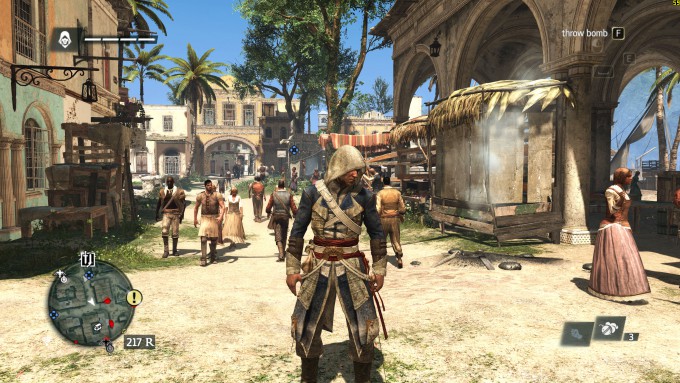
(Click here to view screenshot in native 4K)
| Assassin’s Creed IV: Black Flag | |||
| Minimum | Average | ||
| 57 | 62 | ||
| Resolution: | 3840 x 2160 | Environment: | Very High |
| Shadow: | High | Texture: | High |
| Reflection: | High | Anti-aliasing: | FXAA |
| God Rays: | Low | Ambient Occlusion: | HBAO+ (Low) |
| Volumetric Fog: | On | Motion Blur: | On |
With the TITAN X, this game could effectively be maxed out, albeit with HBAO+ set to Low. On the GTX 980 Ti, I had to drop the shadow quality from Very High to High, and God Rays from High to Low. With God Rays still set to High, the average framerate was 59, so it’s not exactly a stark performance improvement, and thus might not be a change you’d yourself make.
Battlefield 4
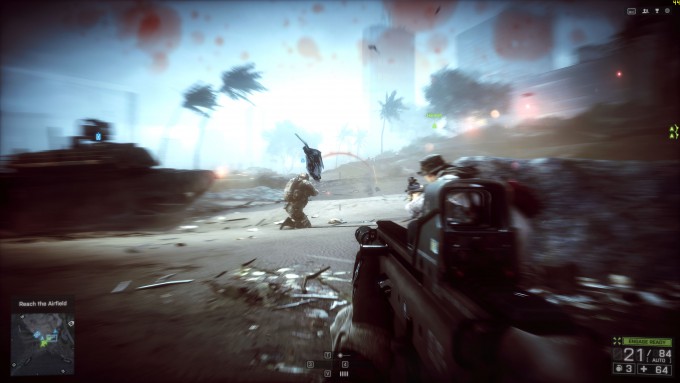
(Click here to view screenshot in native 4K)
| Battlefield 4 | |||
| Minimum | Average | ||
| 39 | 59 | ||
| Resolution: | 3840 x 2160 | Texture Quality: | Ultra |
| Texture Filtering: | Ultra | Lighting: | Ultra |
| Effects: | Ultra | Post Processing: | Ultra |
| Mesh: | Ultra | Terrain: | Ultra |
| Terrain Decoration: | Ultra | Anti-aliasing Deferred: | Off |
| Anti-aliasing Post: | Off | Ambient Occlusion: | HBAO |
A minimum FPS of ~40 might not seem too impressive, but there are many occasions in this scene where the framerate just tanks because of the sheer amount of action. Overall, performance is quite good when AA is disabled. If you want to give things a nice boost, I’d disable ambient occlusion, or decrease effects and post processing to High.
Crysis 3
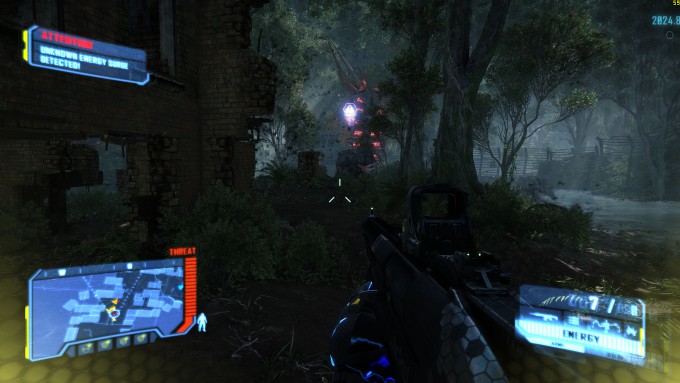
(Click here to view screenshot in native 4K)
| Crysis 3 | |||
| Minimum | Average | ||
| 41 | 59 | ||
| Resolution: | 3840 x 2160 | Anti-aliasing: | FXAA |
| Texture: | Very High | Effects: | High |
| Object: | High | Particles: | Medium |
| Post Processing: | Medium | Shading: | Medium |
| Shadows: | Medium | Water: | Medium |
| Anisotropic Filtering: | x16 | Motion Blur: | Medium |
| Lens Flares: | Yes | ||
The settings above mimic those I established with the TITAN X, except the Post Processing has been dropped from High to Medium. Even with that change, we’re still sitting at just under 60 FPS, but that’s just fine. The game still felt very fluid, because if the game did dip to the minimum FPS of ~40, it was because of all the action on the screen, which makes that slowed performance barely noticeable.
Dying Light
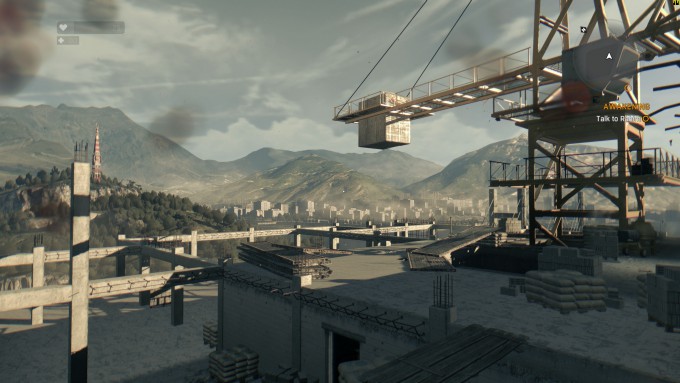
(Click here to view screenshot in native 4K)
| Dying Light | |||
| Minimum | Average | ||
| 45 | 60 | ||
| Resolution: | 3840 x 2160 | Texture Quality: | High |
| Shadow Map Size: | High | Foliage Quality: | High |
| View Distance: | 60% | Ambient Occlusion: | Off |
| NVIDIA HBAO+: | Off | NVIDIA Depth of Field: | On |
| Motion Blur: | On | Antialiasing: | On |
Dying Light is a bit of an odd game, because some of its settings can affect the framerate more than you’d expect. To give me a helping hand here, I used GeForce Experience to choose settings for me, and then went from there. Interestingly, the settings NVIDIA chose were not what I’d consider to be playable (if I recall, average FPS was 44), so I had to do a bit more tweaking. Ultimately, ambient occlusion was turned off, and the view distance was pegged to 60%.
Grand Theft Auto V
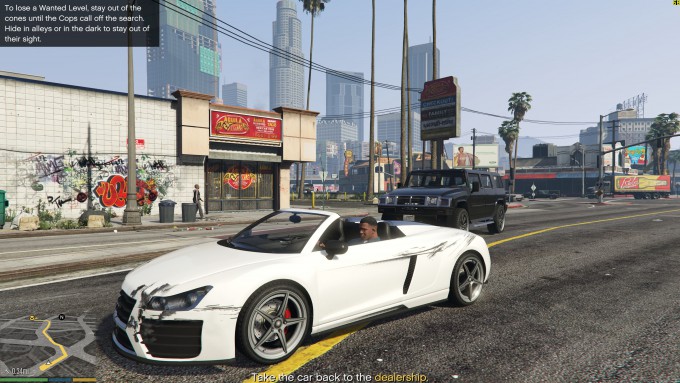
(Click here to view screenshot in native 4K)
| Grand Theft Auto V | |||
| Minimum | Average | ||
| 48 | 59 | ||
| Resolution: | 3840 x 2160 | FXAA: | On |
| MSAA: | Off | NVIDIA TXAA: | Off |
| Population Density: | 100% | Population Variety: | 100% |
| Distance Scaling: | 100% | Texture Quality: | Very High |
| Shader Quality: | Very High | Shadow Quality: | Very High |
| Reflection Quality: | Very High | Reflection MSAA: | Off |
| Water Quality: | High | Particles Quality: | High |
| Grass Quality: | Very High | Soft Shadows: | NVIDIA PCSS |
| Post FX: | High | Motion Blur: | 0% |
| DoF Effects: | Off | Anisotropic Filtering: | 16x |
| Ambient Occlusion: | Normal | Tessellation: | Off |
That’s quite the settings list, isn’t it? As I did with Dying Light, I let NVIDIA’s GeForce Experience configure the game for me. Fortunately for me, it chose well, as the benchmarking runs averaged 59 FPS, and kept close to 50 FPS on the minimum side.
GRID 2
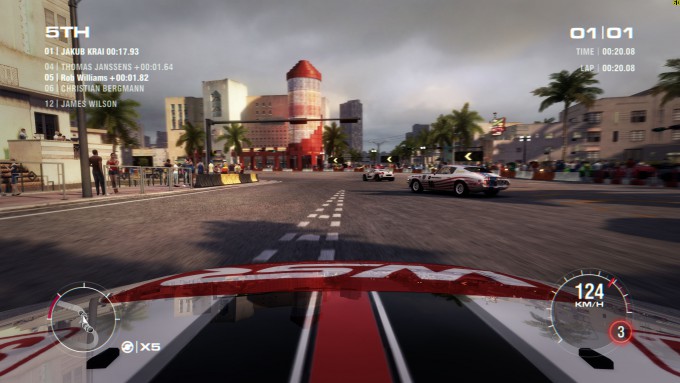
(Click here to view screenshot in native 4K)
| GRID 2 | |||
| Minimum | Average | ||
| 53 | 61 | ||
| Resolution: | 3840 x 2160 | Multisampling: | 8x MSAA |
| Night Lighting: | High | Shadows: | Ultra |
| Advanced Fog: | On | Particles: | Ultra |
| Crowd: | Ultra | Cloth: | High |
| Ambient Occlusion: | Ultra | Soft Ambient Occlusion: | On |
| Ground Cover: | High | Vehicle Details: | High |
| Trees: | Ultra | Objects: | Ultra |
| Vehicle Reflections: | Ultra | Water: | High |
| Post Process: | High | Skidmarks: | On |
| Advanced Lighting: | On | Global Illumination: | On |
| Anisotropic Filtering: | Ultra | ||
GRID 2 and Grand Theft Auto V are two peas in a pod when it comes to a comprehensive graphical settings list. What is it about games that begin with G and involve lots of driving? As expected, the 980 Ti can handle GRID 2 just fine at max detail.
Sleeping Dogs Definitive Edition
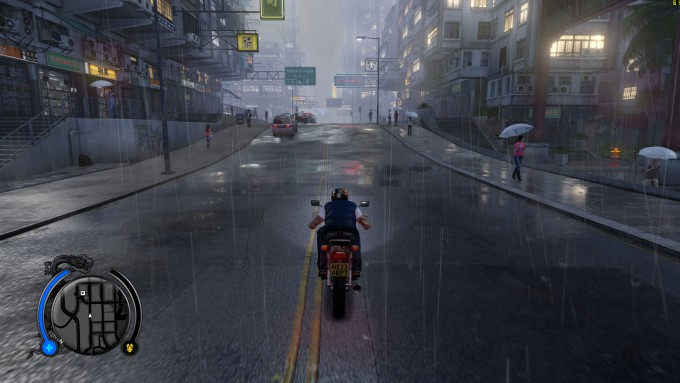
(Click here to view screenshot in native 4K)
| Sleeping Dogs | |||
| Minimum | Average | ||
| 52 | 62 | ||
| Resolution: | 3840 x 2160 | Anti-aliasing: | Normal |
| High-res Textures: | On | Shadow Resolution: | High |
| Shadow Filtering: | High | Ambient Occlusion: | On |
| Motion Blur: | High | World Density: | Extreme |
Yet another non-surprise here: Topped-out, Sleeping Dogs Definitive Edition runs great at max detail. The exception is with AA; it runs at Normal instead of High or Extreme, which is fine since those higher settings don’t make too much of a difference.
The Crew
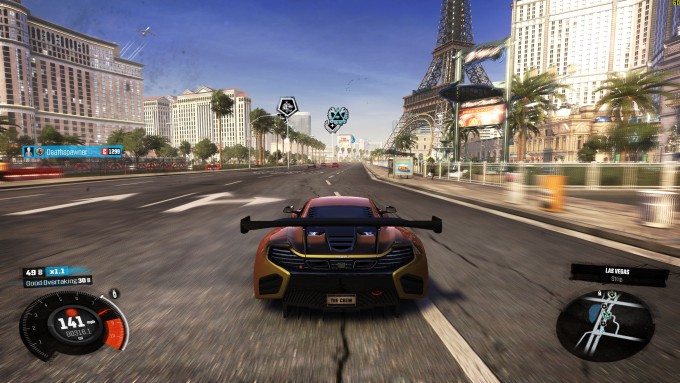
(Click here to view screenshot in native 4K)
| The Crew | |||
| Minimum | Average | ||
| 58 | 60 | ||
| Resolution: | 3840 x 2160 | Geometry: | Ultra |
| Shadows: | Medium | Textures: | Ultra |
| Environment Mapping: | Ultra | Depth-of-Field: | High |
| Motion Blur: | High | Anti-aliasing: | FXAA |
| Grass: | High | Ambient Occlusion: | SSAO |
GRID 2 might not be too demanding nowadays, but as far as racing games go, The Crew definitely is. Surprisingly enough, the game can run super-high details and still hit 60 FPS easily at 4K. This was based on a single-player race in Long Beach, so this performance might not be representative of the entire game.
Tom Clancy’s Splinter Cell Blacklist
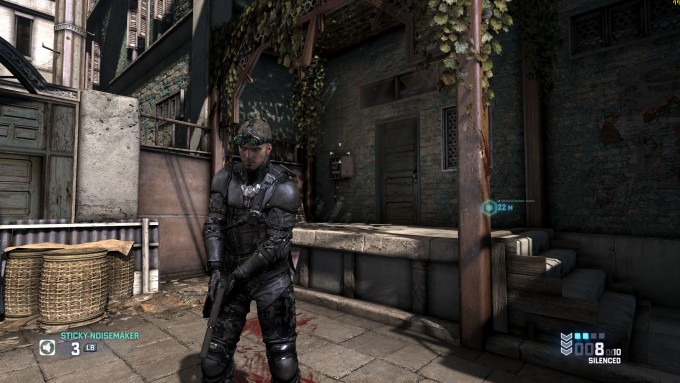
(Click here to view screenshot in native 4K)
| Tom Clancy’s Splinter Cell Blacklist | |||
| Minimum | Average | ||
| 57 | 72 | ||
| Resolution: | 3840 x 2160 | Texture Detail: | Ultra |
| Shadow: | Ultra | Parallax: | On |
| Tessellation: | On | Texture Filtering: | 16x |
| Ambient Occlusion: | Field AO | Anti-aliasing: | FXAA |
The TITAN X allowed us to enable HBAO+ in Blacklist and breach the 60 FPS mark, but that proves to be a bit too much for the 980 Ti. To fix that, I simply disabled HBAO+ and retained the Field AO option, which, as you can see, gives us awesome performance.
Final Thoughts
And… there we have it.
I admit that I was a little surprised I couldn’t match the memory overclock with this card as I did with the TITAN X, since both offer identical configurations, but the upside to that is that the extra 100MHz wouldn’t have made a big difference to begin with. What was nice to see was that I could match the core overclock on this card as I did the TITAN X, +210MHz. As seen earlier, that clock increase gives us an effective 9~20% performance boost.
Once the 980 Ti begins to flood the market, I’ll be interested to see what kind of overclocks will become typical. I felt like I should have been able to push our sample harder, but it just wasn’t happening. A small clock boost rendered instabilities rather quickly, and increasing the voltage accomplished absolutely nothing. Still, despite all that, the performance improvements exhibited are impressive, so even if I were able to push the card another 20MHz on the core, the real-world performance gain would have been extremely minimal when compared to the original +210MHz.
Here’s another way to look at it: EVGA’s top-end 980 Ti model, the Hydro, is clocked at +140MHz over reference. The overclock I deemed stable on our sample improved that by another 70MHz. Not too shabby!
Overclocking aside, the Best Playable results tell us something that wasn’t entirely clear in my full review, due to the apples-to-apples comparisons: the card is fantastic for 4K. Of course, some graphical sacrifices need to be made, but that’s the case with the TITAN X as well. 4K is just an intense resolution. If you want an “ideal” 4K experience in the latest games, multiple GPUs will be required. Your wallet may hate you, but something tells me NVIDIA sure wouldn’t!
A selection of GTX 980 Ti Graphics cards are available from Amazon and Newegg.
Support our efforts! With ad revenue at an all-time low for written websites, we're relying more than ever on reader support to help us continue putting so much effort into this type of content. You can support us by becoming a Patron, or by using our Amazon shopping affiliate links listed through our articles. Thanks for your support!




